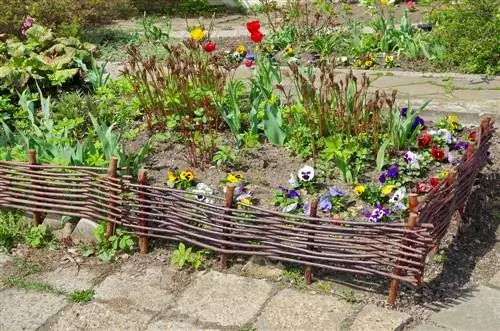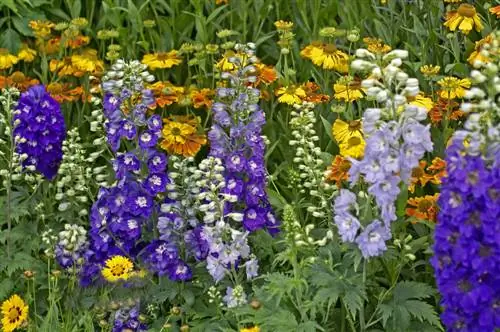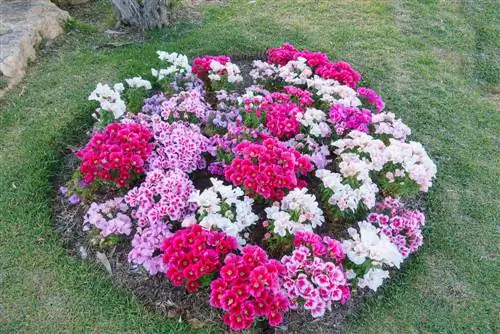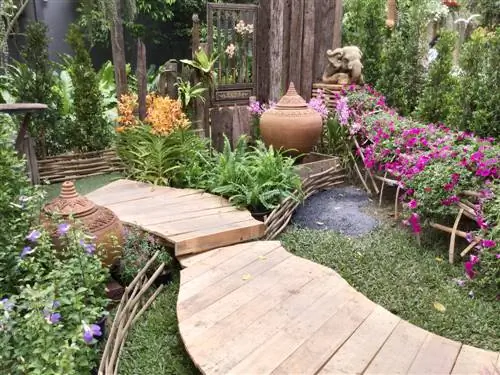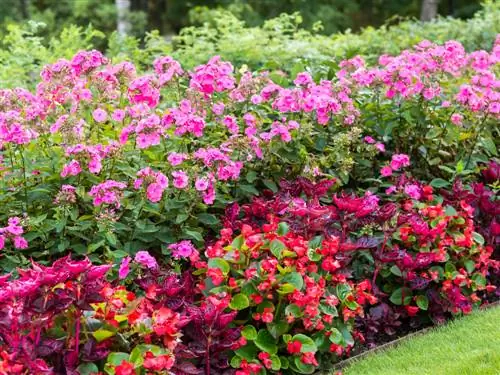- Author admin [email protected].
- Public 2023-12-16 16:46.
- Last modified 2025-01-23 11:21.
A fence around the garden is a fairly common sight in this country, but individual beds are rarely fenced off. But sometimes there are good reasons for this, if either the bed or small children need to be protected.

How do you design the fence for a bed in the garden?
In order to fence in a bed, you should take into account the material (wood or metal), the height of the fence, the protection aspect (children, animals, plants or pond) and the possible use of an optical boundary or bed border.
For example, we recommend a fence around the garden pond so that playing children cannot fall in. If you have pets, the fence protects the plants from being nibbled on and dug up by free-roaming rabbits or from the bed being used as a dog toilet by your dog.
Which fence is suitable for my bed?
In principle, you can use any fence within your garden, but low fences are often sufficient as a boundary. However, the amount and design depends on what you want to achieve. You can find various fence elements made of wood or wire mesh in stores.
If you want to protect your children from poisonous plants or falling into the pond, then the fence should be high enough that they cannot easily climb over it. The same applies to dogs. Rabbits, on the other hand, need a barrier that reaches close to the ground and is narrow enough that they cannot crawl through.
A wicker fence fits very well in a natural or cottage garden, but it is usually not a major obstacle for children or animals. Wire mesh is effective, but rarely really decorative.
Alternatives to the fence
A fence doesn't always have to be built as a barrier; alternatively, you could perhaps also plant a hedge. Both flowering and evergreen plants such as boxwood are suitable for this. A small wall, for example made of field stones, is also conceivable as a bed border, alternatively a row of laid out stones.
Considerations for building fences in the garden:
- Who or what should be protected, children, animals, plants or pond?
- Which material suits your garden, wood or metal?
- How high should the fence be?
- Is a visual boundary or bed border enough?
Tip
The protection of your children should always be the priority, the decorative effect comes second in this case.

